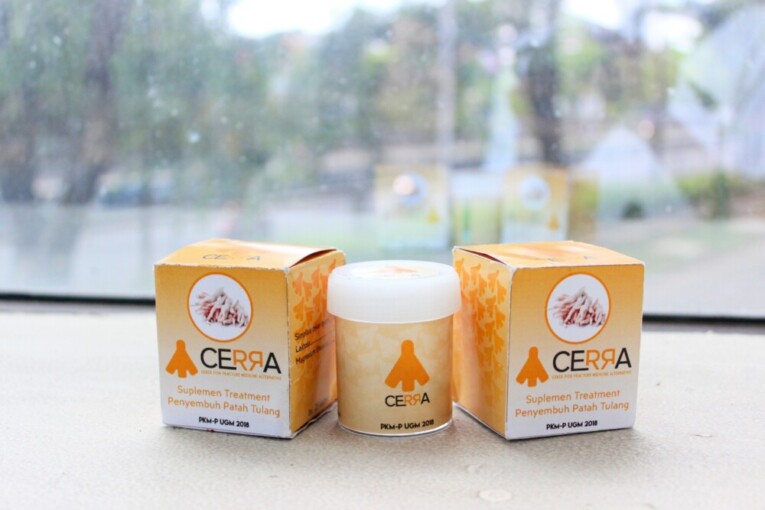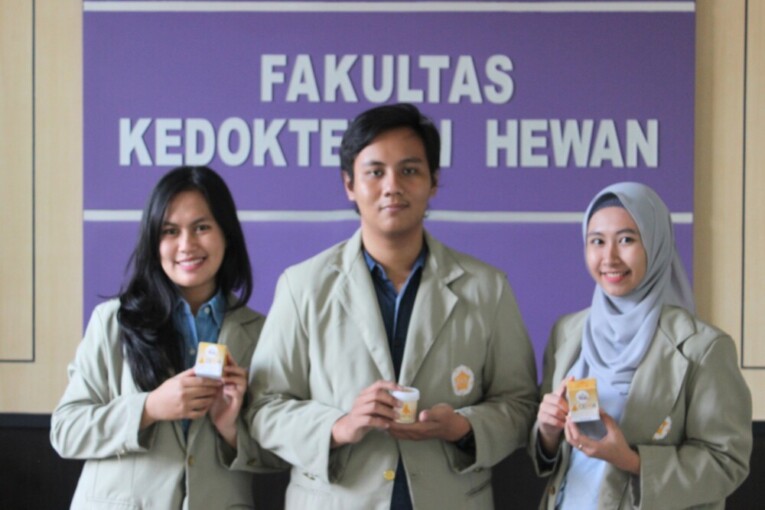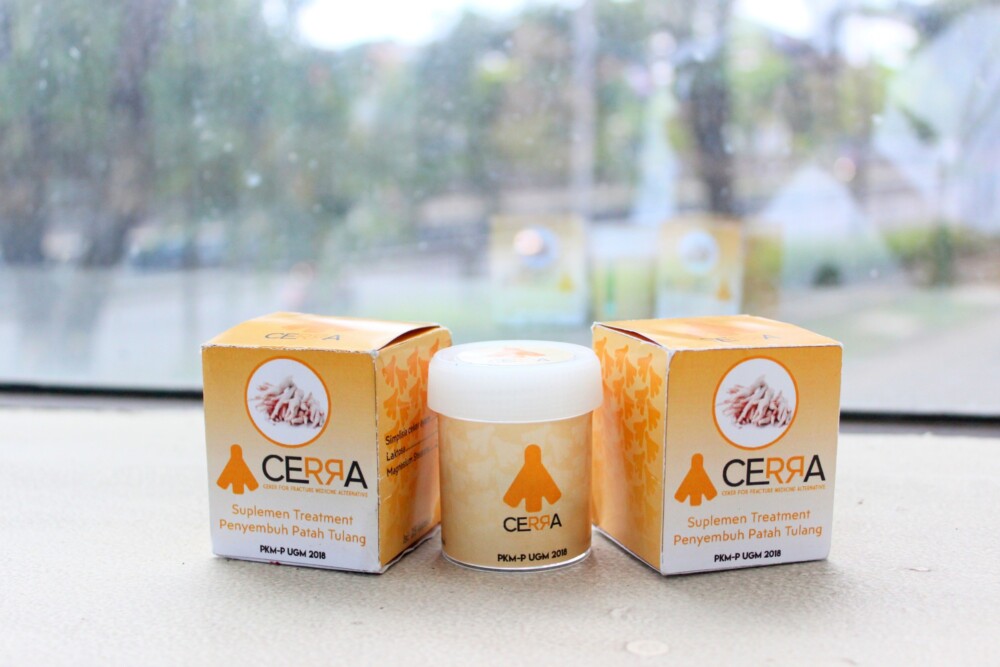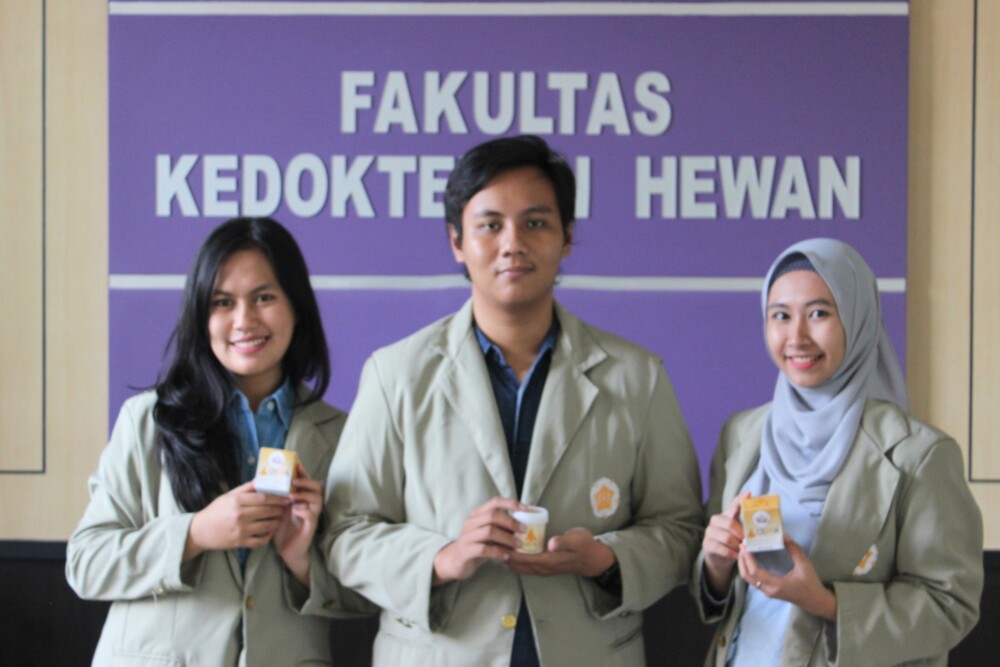Although chicken feet are used in several cuisines, it may be one part of the chicken that is often thrown away. Who would have thought that chicken feet store plenty of health benefits?
The potential was observed by three students of UGM Faculty of Veterinary Medicine, Aryo Anfasa Rais, Meliya Permatasari, and Yudith Violetta Pamulang. They have successfully transformed chicken feet into a bone fracture medication called Cerra.
“Fracture healing in human is a complex process that takes a long time and involves matrix proteins also mineral deposits to help with bone regeneration and growth. The materials can be found easily on chicken feet as byproducts from poultry industries in Indonesia with abundant amount each year,” said Yudith.
According to WHO, Yudith said, the annual rate of bone fractures in Indonesia and other countries is quite high. There were an estimated 13 million fractures occurring in 2008 and increasing to 21 million in 2010. In Indonesia, there are more than 45,000 fracture occurrences per year.
The facts encouraged the students to try developing a medical product that contained substances needed for the treatment, and they found them in chicken feet.
Chicken feet are comprised of tendons, skin, and bones that are usually processed as food ingredients. A further study shows that chicken feet are rich in protein, collagen, and cartilage consisting of glucosamine, collagen, and chondroitin sulfate A, B, and C.
Moreover, the feet bones deposit 99% calcium and mineral in animals. These contents are the precursor in synthetic repair of cartilage and joints. Due to its low economic value, chicken feet-based medicine can be produced at a relatively cheaper cost with the same quality as the marketed supplements.
Mentored by drh. Setyo Budhi, M.P. since May 2018, the students started the production of Cerra with a simplification process of chicken feet to obtain Cerra powder that contains two or three times more calcium and phosphorus than chicken feet. The process continued with the formulation of Cerra in capsule preparation to achieve maximum absorption.
“By turning the chicken feet into powder through simplification process, the raw materials are easily digested and still maintain the contents needed in the fracture healing process,” Yudith added.
In vivo testing of the Cerra capsule formulation was conducted on brown rats with dexter femur texture and treated with the capsule preparation. After 21 days, the results showed a positive effect of Cerra on the fracture healing time.
“Callus formation in the Cerra group with a dose of 225 mg/head/day was faster than the other groups. It is supported by a statistical analysis using One Way Annova that is P<0.05. It proves that there is a significant callus growth in the Cerra group of 225 mg/head/pay,” explained Mellya.
She added that the study is currently in the pre-clinical stage and there will be clinical and post-clinical stages after this. Through further testing, she hopes that the medicine can be produced and used by people as an alternative to the existing drugs.





